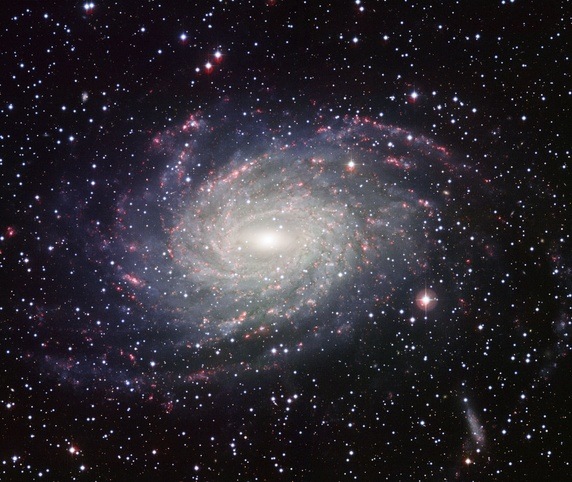Where are the Stars Found
Stars
Stars are luminous bodies (i.e., bodies that give light) regularly seen as points of light in the night sky. Our sun is a star too. Many of the stars that we see are much bigger than the sun. Since they are very far away from us, the light reaching us from them is very faint. This faint light appears to twinkle due to atmospheric disturbances.
The stars that we see with the naked eye are thousands of ‘light years’ away from us. A light year is the distance travelled by light in one year. It is an enormously large distance. Light year is commonly used as a unit in astronomy as the distances involved are extremely large.
One light year = 3 x 108 x 365 x 24 x 60 x 60 m
= 9.46 x 1015 m or 9.46 x 1012 km
The closest star to us (other than the sun) is Proxima Centauri, which is about 4.22 light years away. This means that the light from this star takes 4.22 years to reach us!
If you look up at the night sky, in a place far away from the pollution and lights of the city, you will see a broad band of light. This band is formed by millions of faint stars that belong to the Milky Way galaxy, named so because it looks like a trail of milk split across the sky. We belong to the Milky Way galaxy. The Milky Way galaxy, to which our sun belongs, has a diameter of about 100,000 light years.

Stars, planets, moons, and various other bodies in space are collectively called celestial bodies. The stars, like the sun, appear to move from east to west. This is due to the Earth’s rotation. However, there is one star that appears almost stationary to us. This is the Pole star (also called ‘Dhruv tarn’ or Polaris), named so because it is in the direction of the North Pole.
All the stars appear to rotate about a point very close to the Pole star, which appears to be almost stationary. The angle of the Pole star above the horizon gives us our latitude on Earth.
Activity
Aim: To observe the motion of the sun in the sky
Materials needed: A matchstick, a small ball (the size of a marble) of play dough or atta, a sheet of A4 size white paper, a watch/clock, a sharp pencil, adhesive tape/chalk piece, a black pen, a red pen, a magnetic compass, and the day’s newspaper .
Method:
- Stick the matchstick in the play dough/atta, and make sure it is absolutely upright.
- Place the sheet of white paper on a flat surface on a part of your terrace/backyard that receives sunlight throughout the day.
- Place the matchstick with the play dough in the centre of the sheet of paper. Use the adhesive tape to stick the sheet of paper to the ground. If you cannot use adhesive tape, you can draw the outline of the sheet of paper with a piece of chalk. Make sure you are getting a good shadow of the matchstick. Leave this set-up undisturbed throughout the day.
- Mark the tip of the shadow of the matchstick with a pencil. Note the time.
- Repeat step 4 every half hour, right up to sunset.
- Join the points marked by you through the day.
- Draw an arrow (using the black pen) to show the direction in which the shadow moved from morning to evening. The direction of motion of the sun is opposite to this direction. Mark this arrow with the red pen.
- Use the magnetic compass to find the direction in which the sun moved.
Observation: You will find that there is a small difference between the east-west line of the magnetic compass and the line you have drawn. This is because the magnetic North-South poles do not coincide with the geographic North-South poles of the Earth.
Note: Start this activity early in the day (7-8 a.m.), and make sure you are free till sunset. Look at the local newspaper to find out the times of sunrise and sunset so that you can plan your day accordingly.
